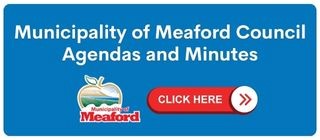By Stephen Vance, Staff

As reported in April, the Municipality of Meaford will be cracking down on illegal connections to municipal sewer lines in an attempt to reduce the amount of inflow to the waste-water collection system through illegal storm-water connections, rooftop drains, poor plumbing, and other direct inputs.
Infiltration is groundwater that enters the waste-water system through damaged pipes, poor connections, or other deteriorated infrastructure such as maintenance hatches.
“Inflow associated with the connection of eavestroughs, sump pumps, roof top drains, and leaky maintenance hatch covers in various locations within the system, and is generally contained within the older parts of the urban area,” Director of Operations, Stephen Vokes, advised council in April.
The municipality will begin smoke testing the sewer lines in the downtown area on Monday June 22, and it is anticipated that the smoke testing will be completed by Friday June 26. Notices will be mailed to properties within the project area.
“The smoke testing will be conducted by Benko Sewer Service. The smoke from the testing process may be seen coming from roof vents, building foundations, eaves troughs, or manhole covers. The smoke will not enter your home if it is properly plumbed, vented and your water traps contain water. The smoke is a non-toxic, odourless substance, which is harmless to humans, pets, food, and material goods,” advised the municipality in a press release issued on Wednesday June 17. “If you detect smoke in your home, please report it to the crews working in the street conducting the testing. Please avoid unnecessary exposure to the smoke, because although the smoke is non-toxic it may be irritating to the nasal passages of some people. If you experience irritation, it should be temporary and should quickly disappear once exposure has ceased.”
In 2014, the Municipality of Meaford engaged the Ainley Group to conduct an Inflow and Infiltration Study to determine the location and extent of groundwater and stormwater entering into the Municipality’s Wastewater Collection System.
The results of the Inflow and Infiltration study into Meaford’s waste-water system were presented to council at their April 13 meeting.
“The completion of the Inflow and Infiltration (I&I) study has pinpointed a number of problem areas that require substantial rehabilitation and reconstruction,” advised Vokes in his report to council. “The report suggests that $665,000 is required to deal with sanitary deficiencies. These costs will be levied through the waste-water user fees. As well, there will be costs associated with rehabilitation of the road, curb, and sidewalks during any repairs which are a tax levy responsibility.”
Vokes said in his report that additional funding will need to be found starting with the 2015 budget, as the projected costs exceed what is included in the existing road preservation model.
Of particular concern to Vokes are illegal connections to the municipal storm-water system.
“More importantly, the study concludes that much work will need to be done to deal with storm water infiltration. Long-range plans will need to be developed to ensure that the best return on investment is generated with the use of tax- and user-pay dollars. A storm water management plan will determine overall costs and plausible next steps,” read Vokes’s report.
He also stressed that many property owners with illegal connections aren’t aware that they are in violation of existing municipal bylaws, however their properties still need to be brought into compliance.
“We suspect that most of the people that are (illegally) connected aren’t aware that they are. So we’re just pointing out that we may get to a point when we need to enforce it. We can’t have it that someone who refuses to cooperate, and then we don’t enforce, and the rest of the people who are willing to cooperate see their neighbour not willing to,” Vokes told council in April.
Meaford’s Treasurer, Darcy Chapman, impressed upon council the importance of addressing the issue.
“The average daily flow of that waste-water treatment plant when it’s nice and dry in the middle of winter, or middle of summer is 2,600 cubic metres. In the spring and fall during heavy rain, and huge run-off, it can be as high as just over 13,000 cubic metres. So, we’re treating 10,000 cubic metres of rain water. And if we don’t do something about it, it means we are going to have to plan an expansion (of the waste-water treatment plant) a lot sooner than 20 years from now, and we’re talking about $20 million to $30 million,” advised Chapman.









